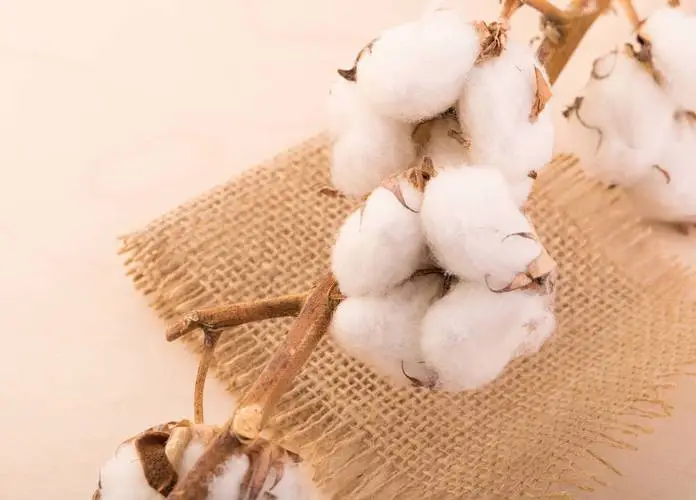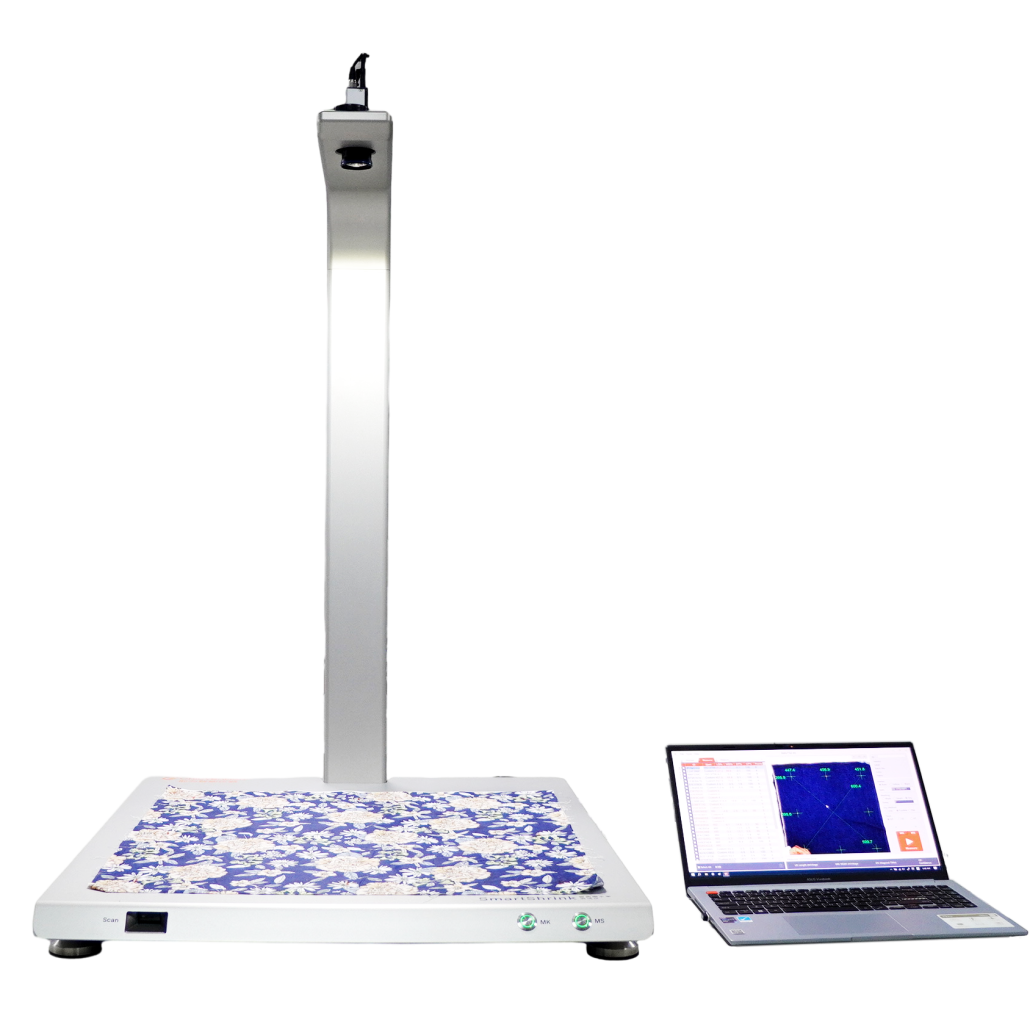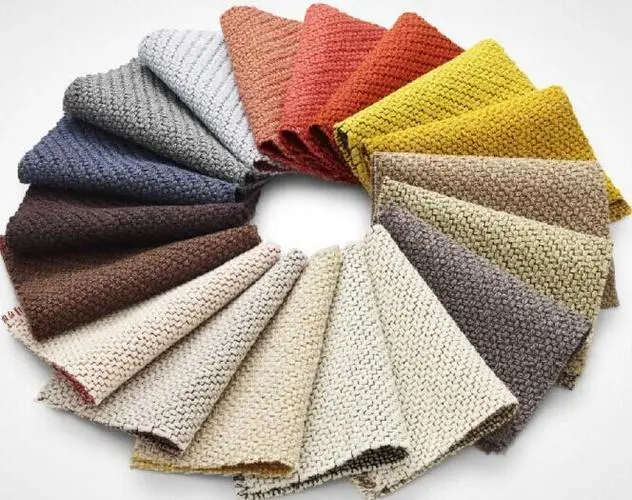Anyone dealing with textiles is worried about fabric shrinkage. It’s sad when you love a shirt, but it shrinks when you wash it. Or, a quilt that you made carefully loses its shape. Knowing and acting can prevent fabric shrinkage. They keep your textile its original size.
In this long guide, we explore how to prevent fabric shrinkage. We give practical tips and strategies for keeping fabrics from shrinking. You might be a textile enthusiast, a garment maker, or someone who wants it’s clothes to last longer. Learning to keep clothes from shrinking in the dryer will improve your textile skills.
What is a good shrinkage rate?
Good shrinkage rates depend on several elements. These include fabric type, end use, and personal preference.
First, we should acknowledge that different fabrics behave differently. This is true both during washing and drying. Fabrics like polyester or nylon are less likely to shrink when washed. This is because they are artificial fibers. Natural fibers such as cotton, linen, and wool, but, will absorb water and become smaller. This happens due to certain physical factors.
With natural fibers, a shrinkage rate of 2-5% is generally considered to be acceptable. This means that the fabric may shrink by 2-5% after its first wash and dry cycle. But, some fabrics can shrink a lot. This is especially true for those with loose weaves or high moisture absorbency. They might shrink up to 10% or even more. The fabric’s specific properties are important. This is shown by this variation.
The acceptable shrinkage rate also depends on what you use the fabric for. For example, in making garments, some shrinking can be predicted. It can be adjusted during the pattern-making and sizing stage. Shrink allowances are often factored into garment-cutting processes. They aim to achieve the correct size and fit after washing.
In home textiles, such as curtains, linens, or upholstery, there may be strict rules about shrinking. Too much shrinkage in these applications can warp items. It will make them fit poorly and look bad. As a result, these textiles should ideally change very little in length when washed. The ideal change is 2% to 5%. This will maintain their original appearance over time.
Also, individual choices determine what counts as a good shrinkage rate. Others may have no problem with it getting slightly smaller after washing. Some people prefer no or very slight shrinkage to keep the fabric’s size. The feel of the material and how tightly it has been woven determine the level of shrinking. So do its expected use.
Which fabric has more shrinkage?
Natural fabrics, like cotton, linen, and wool, shrink more. Synthetics, like nylon and polyester, shrink less. The list below breaks this down:
-
Cotton is infamous for excessive shrinking. This happens when it has not been pre-shrunk or exposed to hot water when drying. The shrinking rate of cotton can vary based on its quality and weaving. But, most cotton fabrics shrink 2-5%.
-
Linen comes from flax plants. It is likely to shrink a lot when first washed. As with cotton, linen fibers also constrict upon being exposed to water and heat. Linen can shrink a lot, up to 7% or 3-%. The amount depends on if it was pressed before use and how it was woven.
-
Wool:Wool is also a natural fiber that will shrink if it gets wet or washed. The amount of contraction depends on the type of wool, like merino wool and cashmere. It also depends on how it is processed. When washed in hot water or roughly handled, wool clothes can shrink by 3-5%.
-
Polyester:Polyester is a man-made fiber that does not shrink easily. It holds its shape well. It shrinks little even after high-temperature washing and drying. Usually, polyester fabrics have less than a 1 percent shrinking ratio.
-
Nylon is a synthetic material. It is known for its toughness and resistance to shrinkage. Like polyester, it is synthetic. Even when repeatedly washed, nylon fabric retains both shape and size. Rates of nylon are negligible compared to those of polyester.
What is the acceptable fabric shrinkage percentage?
The fabric’s shrinkage rate may vary. It depends on factors like the fabric’s type and its intended use. These factors reflect individual preference. Still, in most cases, a range of 2% to 5% is reasonable shrinkage for almost all fabrics.
After the first wash and dry, the fabric may shrink by about 2-5%. But, we must note that some materials like cotton and linen shrink more when washed. This is more than those made of synthetic fiber like polyester or nylon. As a result, depending on some specific textile properties, allowances may need to be made.
For instance, in the clothing industry, shrinkage is expected. A reasonable percentage can be considered during pattern making and sizing. Garment producers allow for shrinkage on fabrics. They do this during the cutting stage to ensure that the final item fits after washing.
On the other hand home furnishing fabrics have stricter demands about shrinkage. Over-contraction in these applications can lead to deformed or poorly fitting items. This will reduce their beauty and usefulness. So, such textiles typically prefer lower shrinkage. They aim for 2-5% shrinkage to keep their appearance and structure over time.
In the end, the allowed fabric shrinkage depends on many factors. These include the fabric type, its use, and personal preferences. Understanding these factors is key. By taking proper precautions in laundering or sewing, people can deal with shrinking. They can also ensure that their textile products last long and are high quality.
How do you know if a fabric will shrink?
Before determining whether a fabric will shrink, you should consider several things. Some include fiber type and weave type. They also include any finishes applied to the fabric. Here are some indicators to help you assess whether a fabric is likely to shrink:
-
Fiber Content:
Natural fibers, like wool, linen, or cotton, tend to shrink more than synthetic fibers. This happens when they get wet or heated. Synthetic fibers, such as polyester or nylon, do not shrink as much. Most of the material is natural fibers. It has a higher chance of shrinking in water and heat.
-
Fabric Construction:
Shrinkage potential in fabrics may also depend on its weave and construction technique. Their tightly woven fabrics leave little room for fibers to contract. So, they are less likely to shrink. But, loose weaves or knits may shrink more. This is because their fibers can move freely during contraction.
-
Pre-Shrinking Treatment:
According to the manufacturer, some fabrics undergo pre-shrinking to reduce shrinkage. You can check if a fabric has been pre-shrunk by its tags or other info. Pre-shrinking involves washing, steaming, or heat setting. It stabilizes the fabric’s size before it reaches the consumer.
-
Finishing Treatments:
Some finishing treatments, like mercerization and sanforization, can affect a fabric’s ability to resist shrinking. For example, mercerization strengthens cotton fibers. It also makes them more stable. This lessens the chance of shrinkage. Clothes with “sanforized” tags have undergone specific processes aimed at reducing shrinkage.
-
Care Instructions:
Observe what is stated in the care instructions provided by manufacturers. The labels may have guidelines. They show the right wash and dry temperatures. They also warn about shrinking. It will help you prevent shrinking if you follow these rules.
-
Testing:
Before using a certain material on your work, do a shrink test if unsure about its potential for shrinkage. Take a small piece of cloth and measure it. Then, use the recommended cleaning method on the label when washing it. After drying, check if there is any change in size by measuring the patch again.
-
Experience:
As time goes by, a person learns how fabrics behave. This depends on their fiber content, weave, and treatment. Once you have worked with a range of fabrics you will be in a better position to predict and manage shrinkage.
What is the ASTM standard for fabric shrinkage tests?
ASTM International (formerly the American Society for Testing and Materials) provides many standards. These instruments are used to test textiles for shrinkage. The standard deals with fabric shrinkage. It is ASTM D3774 – Standard Test Method for Width of Textile Fabric. According to this procedure, we can measure the width of fabrics before and after washing. This will show us if they shrank.
This standard enables measuring the width of cloth samples accurately. It does this to find the reduction in size from washing.
But, the fabric shrinkage test checks width changes. But, many other ASTM standards might also apply. They address different aspects of dimensional changes and performance. They are about testing shrinkages in textiles.
Take, for example, ASTM D4970. It is the Standard Test Method for Pilling Resistance and Other Related Surface Changes of Textile Fabrics. The test uses the Martindale Tester. The test checks how well fabric resists pilling after washing. ASTM D2203 is used to measure fabric stiffness. It tests bending, not shrinkage.
Also, the same scenario is considered when using these other related ASTM standards with ASTM D3774. It lets textile designers and researchers see into fabric contraction. It also shows its behavior after laundering. This approach includes everything. It helps create textiles that are very functional and durable. This lets them meet a wide range of demands in different sectors.
These ASTM standards are associated with ASTM D3774. They should be compared to it so that textile makers or researchers have complete knowledge. They must consider the impact on fabric performance and garment fit after washing. This approach allows for the development of textiles with better performance and longer life. It meets varied consumer needs across industries.
What is the ISO method of fabric shrinkage test?
The ISO shrinkage test is a standard way to test how materials respond to temperature. It focuses on changes in dimensions, like expansion or shrinking. This method was developed by the International Organization for Standardization (ISO). It is widely used in many sectors. It determines quality and tests materials like textiles, plastics, composites, and rubber.
The application of the ISO shrinkage test involves several crucial steps. First, the sample is prepared following certain standards. It involves cutting. The cutting may involve compressing or stretching. The type of cutting depends on the material and testing requirements. Thereafter, heating up or cooling down of samples using specific temperatures takes place.
It is crucial to treat things evenly. This ensures that results can be trusted. This is true throughout the heat-treatment process. Then, measurements are taken at different temperature intervals. They are taken with precise tools like gauges, microscopes, or optical instruments.
Measurements are followed by data analysis. This entails determining dimensional change relative to the initial dimension of samples. This computation is usually expressed in a percentage or another form of rate of change. This is obtained from mathematical formulas that are specified by the ISO standard.
Each ISO standard covers a specific shrinkage test method. The method is for a type of material and set of testing conditions. For instance, there are ISO 294-4 for plastics, ISO 175 for rubber, and ISO 3759 for textiles. Each gives procedures and parameters for its materials.
At the end of testing, we create a full results report. It details the test conditions, sample details, measurement data, and calculations. It also includes any other needed observation. These help us understand the material’s properties. They also help us control product quality and improve manufacturing.
How to calculate the shrinkage percentage of fabric?
To calculate fabric shrinkage, compare dimensions before washing or drying with after washing or drying. Here’s how:
-
Measure Fabric Before Laundering:
Measure fabric dimensions before washing. Use a ruler or any measuring tool, such as a tape measure. For example, if you are doing length by width on one piece of cloth, record that in inches or centimeters.
-
Launder Fabric:
Obey the instructions for cleaning the fabric. It means washing and drying the material at set temperatures and cycle types. Ensure that you recreate, to the best of your ability, how it will be laundered when in use.
-
Measure Fabric After Laundering:
After laundering and drying, measure the fabrics again. Use the same gadgets as before to get their dimensions. Document these measurements.
-
Calculate Shrinkage:
The following formula can be used to calculate shrinkage percentage:
Shrinkage Percentage = ((Original Dimension – Final Dimension) / Original Dimension) x 100
-
Subtract the final dimension (after laundering) from the original dimension (before laundering).
-
Divide the result by the original dimension.
-
Multiply the quotient by 100 to express the result as a percentage.
For example, if the fabric was 100 inches long initially and 95 inches long after washing, it would be
((100 – 95) / 100) x 100 = (5 / 100) x100 = 5%
-
Interpretation:
The percentage of shrinkage calculated represents the amount of fabric contraction after laundry. Positive values show the garment shrank. Negative ones suggest it grew or stretched.
-
Repeat as Necessary:
You might want to use several fabric samples. Average the amounts of shrinkage found. This will make the results more accurate.
From these steps and math, you can find what part of the substance was removed in washing. These findings are very useful for making decisions on textile and apparel production. They are also useful in other areas where fabric performance matters most.
How to prevent fabric shrinkage?
To avoid fabric shrinkage, take care when laundering and making garments. Below are helpful ways to prevent fabric shrinkage;
1.Understanding Fabric Properties:
Different fabrics have different characteristics that affect how they perform during laundering. Natural fibers, like cotton, linen, and wool, shrink more. Synthetic fibers, such as polyester or nylon, shrink less. Knowing the properties of your fabric is crucial. It helps you to prevent shrinkage.
2.Read Care Labels Thoroughly:
Care labels give useful information on how you can handle your fabrics or clothes. You should take your time to read. You should understand the care recommended by the maker. This includes washing and drying temperature recommendations. It has cycle options and any special instructions about avoiding shrinkage.
3.Pre-Shrink Fabric Before Use:
Shrink fabric before sewing or using it. This prevents further shrinkage. You do pre-shrinking by washing and drying the fabric. Do it the same way you will when it becomes a finished garment. By doing this, you will allow fabric to shrink before cutting and sewing. This reduces chances of later unexpected shrinkage.
4.Opt for Cold Water Washing:
Cold water is one of the best ways of avoiding shrinkage when washing garments. Hot water will cause contraction of these fibers hence leading to shrinking. Where possible select cold water settings on your machine’s washing cycles.
5.Use Gentle Wash Cycles:
Violent washing makes clothes fibers rub. This increases fabric shrinkage. For delicate fabrics and garments, go for gentle or delicate wash cycles. Choose the right cycle depending on the type of fabric and follow a manufacturer’s guide.
6.Avoid High Heat Drying:
The major reason why fabrics shrink is due to high heat, especially during drying. Use low heat or air dry your laundered garments as much as you can to prevent the shrinking of these clothes. If you have to use a dryer, remove the material when it is slightly damp. Don’t wait until it is completely dry. This will minimize any subsequent shrinking.
7.Choose Fabric Softeners Wisely:
These products will also help relax the fabric fibers to reduce wrinkles. They make the fibers less likely to shrink. Choose detergents made for this material type. Avoid ones that harm its natural oils. The latter will make the clothes shrink easily.
8.Consider Hand Washing Delicates:
Often hand washing is the best option for delicate fabrics or those which tend to shrink easily. This method is gentle to the garment. It reduces the risk of shrinkage. Clean delicate clothes with cold water and mild soap. Avoid twisting or wringing thin materials.
9.Prevent Overcrowding:
To avoid uneven shrinkage, do not overcrowd the washing machine or dryer. During washing and drying, leave space for the clothes to move freely. This lets them be handled evenly and avoids shrinkage.
10.Dry Clean Delicate Fabrics:
For a thin fabric like silk, you should have it dry-cleaned. Rather than washed because it will only shrink if washed. For wool purposely do not wash at home to avoid it from shrinking according to its nature. The best thing to do is to check the care label. Or ask a cleaning professional how to clean this delicate fabric.
11.Conduct Test Washes:
If you are unsure how a material will react to washing, test wash small hidden parts. Do this before washing all the clothes. You can confidently check for any decrease in the size of clothes made from different materials. You can do this without damaging them using this method.
12.Document Washing Methods:
Record the washing and drying process for each fabric. Content helps us find the cause of size reductions. This lets us make changes while laundering clothes.
By adopting such positive steps and taking time to learn about the nature of your fabrics. You will reduce fabric shrinkage. This will keep your fabrics and clothes looking good for years. It doesn’t matter if you are sewing a new garment. Or, if you are laundering your favorite shirt. Or, if you are quilting a cherished quilt. It avoids shrinkage. It will keep your fabrics in good condition and preserve their original beauty and usability.
Conclusion
In the world of textiles, shrinkage is an inevitable fact. But we must not leave it to chance. But this need not be so because having insights on it plus being more proactive. It can help us maintain our fusions’ rich behaviors countless times.
Understand the characteristics of different textiles, read care labels carefully. Take measures such as pre-shrinking and washing in cold water before use. Gentle treatment will cut shrinkage. It will keep our beloved clothes, quilts, and household fabrics nice.
Remember, prevention is better than cure; therefore through much vigilance and careful handling. We can maintain both their texture as well as looks for quite a long period. For this reason, let us stand up to it. Each stitch or wash stands for the timeless beauty of our fabrics.
For more information on textile testing methods/standards
or textile testing machines, contact us:
What’s App: +86 180 2511 4082
Tel: +86 769 2329 4842
Fax: +86 769 2329 4860
Email: medium@chiuvention.com



